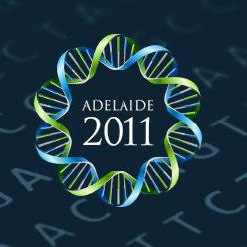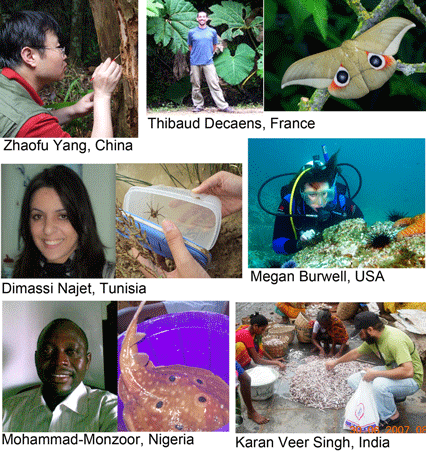News Flashes
 You have 1 more day! Abstract deadline is 12 midnight tomorrow, June 15, for the Fourth International Barcode of Life Conference, Adelaide, Australia, 28 November-3 December 2011. Online submission form here.
You have 1 more day! Abstract deadline is 12 midnight tomorrow, June 15, for the Fourth International Barcode of Life Conference, Adelaide, Australia, 28 November-3 December 2011. Online submission form here.
Young scientists to help document what lives on Earth! Coastal Marine BioLabs (CMB), a private, research-based scientific educational organization in Ventura, California was awarded a 3-year NSF grant to train high school teachers and students in DNA barcoding, with the goal of contributing reference sequences to Barcode of Life Database. CMB students and their teachers will be part of the International Barcode of Life project, which aims to expand BOLD (currently about 1.2M barcodes from 130K species) to 5M records from 500K species, the largest biodiversity intiative ever. For more on how students are helping build the genetic database of global species diversity, see Sacramento Bee news story and CMB web page.
Barcode of Life Connect tops 1000 members! If you haven’t already, I encourage you to visit and join the Barcode of Life Connect site, a “network to allow DNA barcoding professionals to discuss issues, share profiles, form special interest groups, and more.”The more includes webinars and links to upcoming relevant conferences. The core of the site is the chance to connect with like-minded barcoding professionals, either directly through their profiles or through discussion groups–so far there are 40 groups ranging from “Medicinal Plants” to “Madagascar” and “Portugese-Speaking Barcoders.”
To get an idea of how barcoding has taken hold around the world, particularly with young scientists, try perusing recent pictures posted by Connect members–I take the liberty of re-posting some images of the investigators and their specimens-enjoy!
This entry was posted on Tuesday, June 14th, 2011 at 10:05 pm and is filed under General. You can follow any responses to this entry through the RSS 2.0 feed. Both comments and pings are currently closed.
